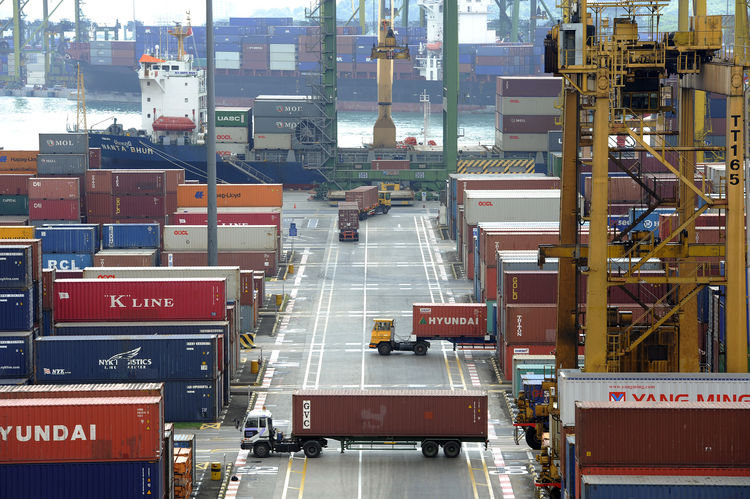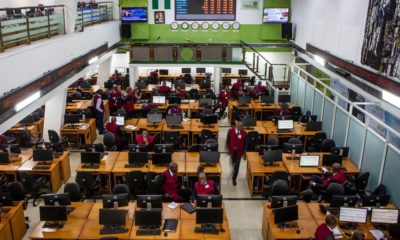- Nigeria, Others Lag Behind in $16trn Global Merchandise Trade
As seaborne trade surpasses 10 billion tons and continues to represent the overwhelming majority of the more than $16trillion in global merchandise trade by volume and value, Nigeria and other African countries have continued to perform poorly, the Country Manager of APM Terminals Nigeria, Mr. David Skov has said.
Skov who stated this at a forum in Abuja stressed that to reverse the trend, the African continent and its Regional Economic Communities (RECs) must improve intra-regional trade to catch up with other regions of the world.
According to him, a breakdown of the group of developing countries shows that goods are predominantly loaded in Asia, which represents close to 40 per cent of the total goods loaded, followed by the Americas (14.7 per cent); Nigeria and the rest of Africa (10.5 per cent) and Oceania (0.1 per cent), “53 per cent of the volume of world seaborne trade is unloaded in developed countries.”
Citing data from the United Nations Conference on Trade and Development (UNCTAD), he said: “Intra-African trade amounts to only about 13.8 per cent as compared to intra-regional trade among Latin America countries which is 22 per cent, Asian countries at 52 per cent and Europe at about 70 per cent. One of the major factors behind this low level of trade integration is the low level of Trade Facilitation implementation.
“Maritime transport is essential to the world trade. Over 80 per cent of the volume of world merchandise trade is carried by sea, and an even higher percentage of developing-country trade is carried in ships. Global seaborne trade have both been growing at a faster rate than global GDP since 1990 according to the UNCTAD Maritime Review of 2016.”
This, he added, showed the increasing importance of transportation infrastructure investment such as ports, terminals and cargo inland services to overall economic growth and rising standards of living, particularly in economically developing areas currently underserved by modern transportation networks and access.
“This development has gone hand in hand with an increase in the volumes of traded goods transported by sea. In 2007, international seaborne trade was estimated at 8 billion ton of goods loaded. During the past three decades the annual average growth rate of world seaborne trade is estimated as 3.1 per cent. Dry cargo (bulk, break-bulk and containerised cargo) accounted for 66.6 per cent of the good loaded. The rest is oil and petroleum transports, “Scov said.
According to him, more than half of all seaborne trade by value moves in containers, with emerging economies of Asia, Latin America, the Middle East and Africa accounting for most of current shipping market expansion.
He added: “The development in international trade and transport has been promoted by several factors. Tariffs and other barriers to trade have decreased through multilateral negotiations in the World Trade Organisation and through regional and bilateral agreements.
“Maritime transport systems have also evolved to today’s container ships taking advantage of economies of scale. The costs of maritime transport have declined over time. The WTO World Trade Report 2008 cites three main technological and institutional changes as reasons for the lowering of shipping cost. First the development of open registry shipping, scale effects from increased trade and containerisation.”
Furthermore, he stated that the openness to trade is one of several important factors to achieve economic growth.
He observed that countries that are open to trade have had faster economic growth than countries that have been more closed to trade. “Greater openness to trade is clearly associated with faster economic growth, but it is not the only factor contributing to growth. Other factors such as technical innovation, a responsible economic policy and education are also necessary, he stressed.
He noted that trade contributes to a positive economic development both by generating incomes from exports, as well as by importing products in demand. According to him, through trade, both the exporting and importing country can take advantage of their respective resources and relative competitive advantage in a more efficient way, and contribute to diffusion of new knowledge through technology transfer.


 Forex2 weeks ago
Forex2 weeks ago


 Naira2 weeks ago
Naira2 weeks ago
 Billionaire Watch1 week ago
Billionaire Watch1 week ago
 Company News4 weeks ago
Company News4 weeks ago




 Naira2 weeks ago
Naira2 weeks ago




 Naira1 week ago
Naira1 week ago




 Naira4 weeks ago
Naira4 weeks ago
 Nigerian Exchange Limited4 weeks ago
Nigerian Exchange Limited4 weeks ago





















